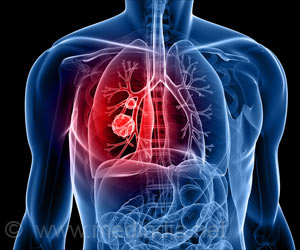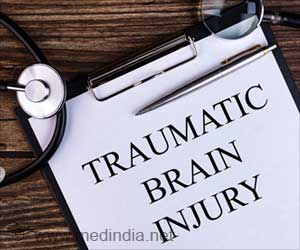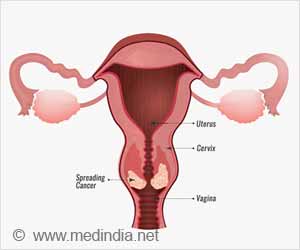One in seven women will develop breast cancer in her life. Breast cancer specialists say that misconceptions often cause women more anxiety than necessary.
One in seven women will develop breast cancer in her life. But how much do most women really know about this disease?
Breast cancer specialists from the University of Michigan Comprehensive Cancer Center say that misconceptions often cause women more anxiety than necessary. And in some cases the fear paralyzes women and prevents them from seeking the care that could lead to successful treatment.Here, experts debunk some of the most common myths about breast cancer:
1. You only get breast cancer if you have a family history. I don’t have a family history, so I don’t need to worry about it. Eighty percent to eighty-five percent of women with breast cancer have no family history of the disease. Even if no one in your family has ever been diagnosed, that’s no excuse to skip your yearly mammogram. “It’s important all women over 40 years old be screened for breast cancer,” says Mark Helvie, M.D., U-M’s director of breast imaging.
2. I’m too young to worry about breast cancer. Breast cancer can affect women of any age. The disease is more common in post-menopausal women, but 25 percent of women with breast cancer are younger than 50. Younger women should have a yearly breast exam by their doctor and begin mammographic screening at age 40. While a breast mass in a younger woman is much less likely to be cancer than a lump in an older woman, it still needs to be checked out. At the same time, you’re never too old to get breast cancer. If you feel a lump – at any age – have it checked out.
3. If I’m diagnosed with breast cancer, it means I’m going to die. Doctors are doing quite well at treating breast cancer, with 10-year survival rates currently at 85 percent to 90 percent. When caught early, up to 98 percent of women survive at least five years. Breast cancer that has metastasized, or spread to other parts of the body, poses the greatest challenge, although women with metastatic breast cancer often live for years with their disease.
4. I’ve made it five years as a survivor, so my breast cancer won’t return. Breast cancer can recur at any time, although it is more likely to happen within the first five to 10 years: 75 percent of women who will get a recurrence see it within six years, and 25 percent recur in the 10 years after that. New hormonal therapies, including tamoxifen and aromatase inhibitors, may be delaying recurrence, so that the cancer is more likely to return after the woman stops taking those drugs.
Advertisement
6. If I have a breast lump, it’s cancer. Most breast lumps felt are not cancer. They could by cysts or a benign condition called fibrocystic changes or fibroadenoma. Lumps could also be pre-cancerous conditions that will need some treatment. But don’t let these facts lull you into complacency. All lumps should be checked thoroughly.
Advertisement
8. I eat a healthy diet, which will make me immune to breast cancer. Diet does play a role in cancer development, but not by itself. No one food or vitamin will prevent breast cancer. At the same time, no one food is responsible for causing cancer. Eat a healthy, balanced diet and strive to get a variety of nutrients.
9. My mammogram was normal, so I don’t have to worry about breast cancer. While mammography does catch the vast majority of breast cancers, it is only one screening tool. One in five breast lumps is invisible on a mammogram. Women should also have a breast exam done by their health care provider each year. If you feel a lump, always get it checked out, even if your last mammogram was clear. Also, it’s important to get a mammogram every year. “The power of screening comes with regular annual exams,” Helvie says. Doctors will look at previous years’ mammograms to assess changes in the breast over time.
10. I was called back for “extra views” after my mammogram. That must mean I have cancer. Extra views may be necessary because there’s a shadow on the image. A mass may turn out to be a benign cyst. Most of the time, no further tests are necessary once the new images are reviewed. About 90 percent of women called back for extra views do not have cancer.
11. Mammograms are painful. Is it comfortable? No. But it doesn’t need to be excruciatingly painful, and most women will say it’s not. Pre-menopausal women should schedule their exam for the first two weeks of their menstrual cycle, when their breasts are less tender. If you find mammograms are painful, talk to the technologist performing it. The amount of compression used can vary, so the technologist can ease up on the squishing if it’s unbearable. Just keep in mind that more compression leads to a better image for the radiologist to read – so there’s a payoff to that bit of discomfort. Don’t think having a digital mammogram will get you out of it either. Digital mammography works the same as standard mammography by requiring compression.
12. If I have a breast biopsy, the surgeon might continue during that operation to remove my entire breast without telling me. Before the biopsy operation, you will sign an informed consent form that explains exactly what procedure will be performed. Many years ago, surgeons would remove a suspicious mass, biopsy it on the spot and proceed to mastectomy if it showed signs of cancer. Today, it does not happen that way. Women have many more treatment options and a surgeon will always discuss these options with patients after a biopsy.
13. My breast lump is painful, so it must not be cancer since cancerous lumps are supposed to be painless. Generally breast cancers are painless, but pain alone cannot rule out cancer. Some women also believe that a painless lump must not be cancer. Again, not true. There’s no correlation between whether the lump is painful and whether it’s cancerous. Any lump should be checked by a doctor.
14. If cancer is exposed to air during surgery, it will spread. Surgery will not cause the cancer to spread. “The only thing that will promote cancer spread is a delay in diagnosis and failure to treat the cancer,” says Lisa Newman, M.D., MPH, director of the U-M Breast Care Center.
15. Radiation therapy is dangerous and will burn my heart, ribs and lungs. Current radiation techniques are safe and effective for treating breast cancer, with few complications. Methods used today minimize exposure to the heart, ribs and lungs. Women may experience a darkening of the skin during the course of treatment or a sunburn-like reddening. This will clear up after treatment is through.
16. Participating in a clinical trial is fine for others but not for me. Clinical research can offer high-quality care for everyone. In all clinical trials, the minimum any woman would receive is standard treatment. In some trials, participants receive standard treatment plus a new approach, such as a new drug or a new way to use an old drug. In other studies, researchers are seeking more answers about the biology of the cancer or the effects of the treatment, so that new ideas can be generated. In these cases, patients’ participation may be as simple as having an extra tube of blood drawn or answering a survey.
“I think every woman should ask her doctor, ‘What clinical trial can I be on?’ At least they should hear the options. Through clinical trials, we will continue to take good care of patients today, and better care of their sisters and daughters in the future,” says Daniel Hayes, M.D., clinical director of the U-M breast oncology program. “Studies have shown women who participate in clinical trials do better in the long run than those who do not.”
Source-Newswise
SRM











